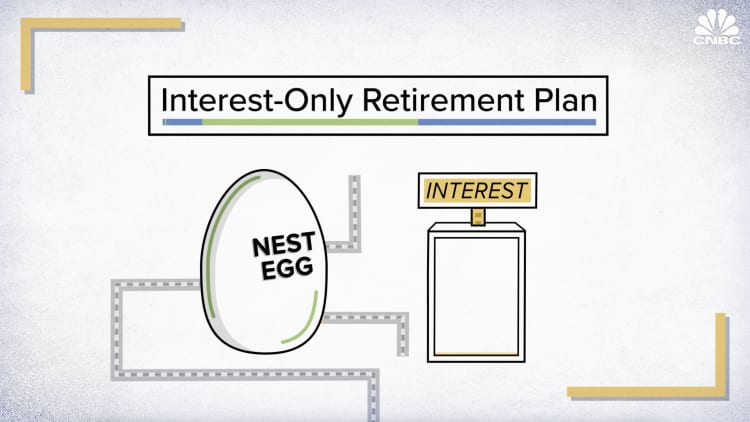Pixdeluxe | E+ | Getty Images
Americans often worry about hitting specific money goals for retirement, but a new report finds that the decision to retire often happens independently of reaching that “magic number.”
U.S. households over the age of 55 control 74% of investable assets, but their retirement status has little to do with their asset levels, according to a new report from Hearts & Wallets.
The research firm analyzed U.S. Census Bureau and Federal Reserve data, and conducted a survey of 5,993 people in August and September 2022.
The report found that more than a third, 36%, of households ages 55 to 64 are already retired. In that age group, 27% are within five years of stopping full-time work and 37% expect to continue working full-time for more than five years.
About a third, 35%, of people in that age group who have less than $50,000 in investable assets described themselves as retired. Among those with $2 million to just under $5 million set aside, 52% are retired.
More from Personal Finance:
Americans think they need nearly $1.3 million to retire well
Fewer Americans are now living paycheck to paycheck
Why it’s important to spend on joy, according to an advisor
There are also some older workers who haven’t retired despite significant savings. Among survey respondents with $2 million to just under $5 million in investable assets, 82% of those ages 65 to 74 and about 94% of those 75 and older are retired.
“Recognize not all older households are retired. Retirement is more about having the financial house in order by paying off debt and scaling back lifestyle than reaching an asset target,” CEO and founder Laura Varas wrote in the report.
Retirement choices not always driven by assets
There are two major reasons people may delay their exit from the labor market, said Carolyn McClanahan, a certified financial planner and founder of Life Planning Partners in Jacksonville, Florida. She is also a member of the CNBC Financial Advisor Council.
“There are some people that love to work, and that work brings them meaning, and they can’t imagine not doing work, because its part of their well-being, and that’s not a bad thing,” said McClanahan, who is also a medical doctor. People who continue to work at that point make sure to maintain a balance where they can still enjoy their life.
A second group “lives out of fear,” she said, and are unsure whether they have enough to retire.
That may be especially true of those in the 55-plus age group, who may believe they have enough, but cannot predict whether they will live another four decades.
“They fear that, ‘If I quit and I lose my ability to work, and then the work falls apart, what am I going to do?’ They live out of fear, and it keeps them from quitting work, even though they may want to,” McClanahan said.
For those workers, figuring out their retirement needs may help overcome that fear. Analyze how much you spend and break it down into how much you’re spending on the needs versus the wants, she said.
“What do you need for your base lifestyle? And do you have enough money to support that should you no longer work?” McClanahan said.
On the flip side, almost half, 47%, of workers end up retiring earlier than expected, according to the Employee Benefit Research Institute’s 2022 Retirement Confidence Survey. Of those, 32% pointed to a hardship such as illness or disability as the cause of their early exit, while 23% retired due to changes at their company, and 38% said they could afford to retire early.

If you’re forced to quit when you are not ready, it is crucial to connect with a financial planner to identify the sources of your cash flow, including assessing a strategy for collecting Social Security or making withdrawals from retirement plans.
“If they’re taking care of a loved one, that’s where it’s really important to look [for] any resources that the loved one who they’re taking care of can provide for them to soften the blow,” McClanahan said.
